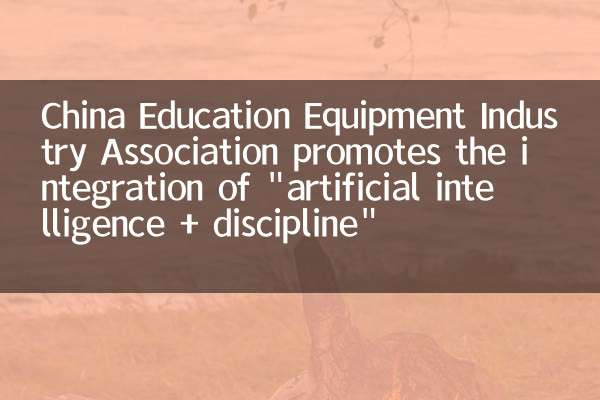Adaptive learning system realizes the unity of large-scale education and personalized training
In recent years, with the acceleration of digital transformation of education, adaptive learning systems have become a hot topic in the field of education. Through artificial intelligence and big data analysis, the system achieves the unity of large-scale education and personalized training, providing new solutions for improving educational equity and efficiency. The following is a hot content analysis of the adaptive learning system on the entire network in the past 10 days.
1. Hot Topics and Trends

According to the network-wide data monitoring, the discussion of adaptive learning systems mainly focuses on the following directions:
| topic | Popularity index | Main focus |
|---|---|---|
| AI-driven personalized learning path | 85 | How to dynamically adjust learning content through algorithms |
| Educational equity and resource allocation | 78 | Reduce the gap between urban and rural education and regional education |
| Learning effect assessment | 72 | Real-time feedback and capability map construction |
| Teacher role changes | 65 | From a knowledge imparter to a learning guide |
2. Key elements of technology implementation
The core technical architecture of the adaptive learning system includes:
| Technical modules | Function description | Typical Applications |
|---|---|---|
| Learner portrait | Multidimensional data analysis to build user model | Cognitive style recognition, knowledge vulnerability detection |
| Content recommendation engine | Dynamic matching learning resources | Difficulty adaptive questions push |
| Real-time evaluation system | Learning process tracking and feedback | Automatic attribution analysis of wrong questions |
| Teaching decision-making model | Optimize learning path planning | Best time to intervention prediction |
3. Practical cases and results
At present, there are many successful application cases at home and abroad. The following is a data comparison of some representative projects:
| Project name | Covering the number of students | Average improvement effect | Key technologies |
|---|---|---|---|
| Company A Smart Classroom | 1.2 million+ | Results increased by 23% | Deep reinforcement learning |
| Province B Education Cloud Platform | 650,000 | Learning efficiency increased by 35% | Knowledge graph construction |
| C International Education Program | 280,000 | Continuous learning rate increases by 42% | Multimodal interaction |
4. Challenges and countermeasures
Despite the huge potential of adaptive learning systems, they still face the following challenges:
1.Data privacy issues: It is necessary to establish a complete data encryption and authorization mechanism to comply with international standards such as GDPR.
2.Algorithm bias risk: Fairness should be ensured through diversified training data and regular audits.
3.Teachers adapt to difficulties: It is necessary to carry out digital ability training for teachers and design a humanized collaborative interface.
4.Hardware facilities gap: The "cloud computing + lightweight terminal" mode can be used to reduce the device threshold.
5. Future development direction
The evolution of adaptive learning systems will show the following trends:
1.Multimodal fusion: Combining biometric data such as voice, expression, gestures, etc. for more accurate state recognition.
2.Interdisciplinary application: Expand from K12 education to vocational training, lifelong learning and other fields.
3.Emotional computing integration: Optimize teaching strategies by identifying learners’ emotional states.
4.Decentralized architecture: Use blockchain technology to realize the secure storage and sharing of learning records.
Adaptive learning systems are reshaping the form of education, and their core value lies in achieving the goal that traditional education is difficult to achieve. With the continuous iteration of technology and the expansion of application scenarios, this system is expected to fundamentally change the way humans acquire knowledge and build a more intelligent and inclusive future education ecosystem.

check the details

check the details